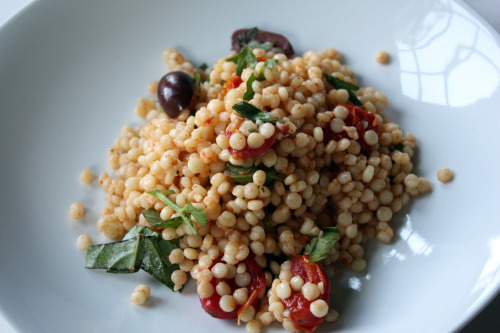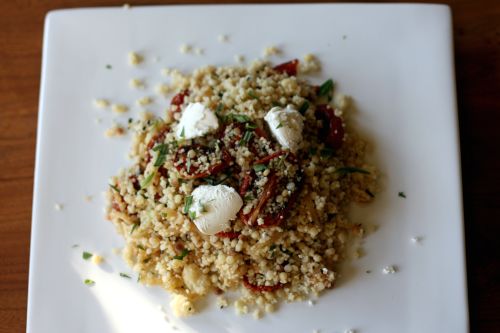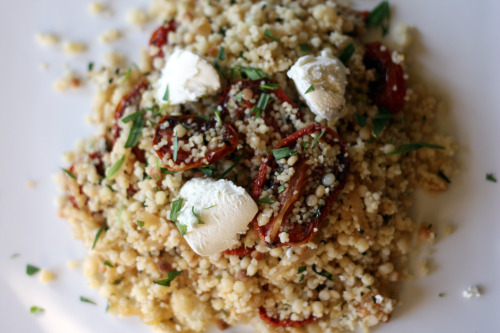It is Labor Day in the U.S. and for many that means barbecues. It means sending summer off with a bang with things like burgers, potato salad, and large slices of watermelon. There will be no barbecue here on this cold and rainy day. I could link to barbecue friendly food from past posts but instead, I am going to talk about cauliflower. (OK, here is one dish that I truly love that even involves a grill! And while I am in parentheses, I should tell you that Seattle has a wonderful music festival every Labor Day weekend and it is called Bumbershoot because it always rains.)
Cauliflower. I have a relatively new appreciation for cauliflower. It started when I learned that roasting it at high heat produces something of utterly transcendent sweetness. Nothing like the sad bowl of plain steamed stuff sitting on my childhood kitchen table, or the pile of raw browning florets untouched at nearly every salad bar and on every crudité platter. Because of my new relationship with this member of the brassica family, I have been more open to recipes starring cauliflower. That is a good thing because this beauty just got a permanent spot in my repertoire.
I recently read somewhere that there is a crisis in the saffron world. Because it is so labor intensive to harvest and so expensive, much of the saffron we pay so dearly for is not actually saffron. In other words, it is not the stamen of the crocus flower but the stamen of other flowers, most notably safflower. Saffron’s aroma is unmistakable (like pot’s aroma is unmistakable – sorry), so be sure to take a whiff of whatever you buy. The high price is worth it for the scent, gorgeous color, and subtle pungent flavor.
Just a pinch here flavors this whole dish. Sure there are also olives, bay leaves and raisins, plus red onions that get cooked down so much and so nicely that even I, who am not usually a huge onion fan, didn’t pick them out. But the saffron is what makes the dish. Buy carefully. I made this as a side dish served warm one night and served it cold as a salad the next. Overnight in the refrigerator made the color of the cauliflower more golden and the flavor more intense, so don’t hesitate to make this ahead of time.
One Year Ago: Holly B’s French Bread
Two Years Ago: Chocolate Peanut Toffee
Saffron Cauliflower
Adapted from Plenty
Serves 4-6
Because this is an English cookbook, all the measurements are metric. I chose to eyeball the ingredients rather than whip out my scale which you will see reflected below.
Large pinch saffron strands
¼ cup boiling water
1 large cauliflower, broken into medium florets
1 large red onion, cut in half and then thinly sliced
1 handful raisins
1 cup green olives, sliced in half
4 tbsp. olive oil
2 bay leaves
Salt and freshly ground black pepper
Preheat the oven to 400ºF. Put the saffron strands in a small bowl and pour over the boiling water. Leave to infuse for a minute, then pour the saffron and water into a large mixing bowl. Add the remaining ingredients plus a large pinch of salt and a few grinds of pepper, and mix everything together with your hands.
Transfer the mix to a medium ovenproof dish, cover with foil, and place in the oven. Cook for 40-45 minutes, or until the cauliflower is tender but not too soft. Halfway through the cooking time, remove the dish from the oven and stir well, then cover again and return to bake.
Once the cauliflower is cooked, take it out of the oven and remove the foil. Season to taste with salt and pepper and serve warm or room temperature.

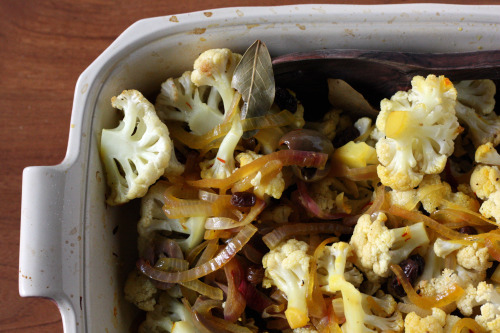
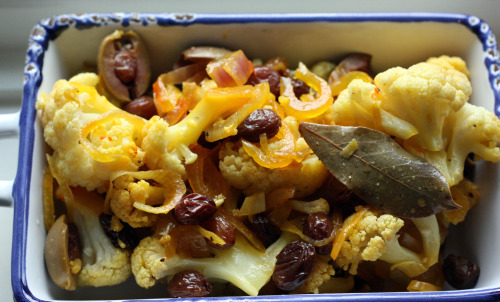

 Share
Share


